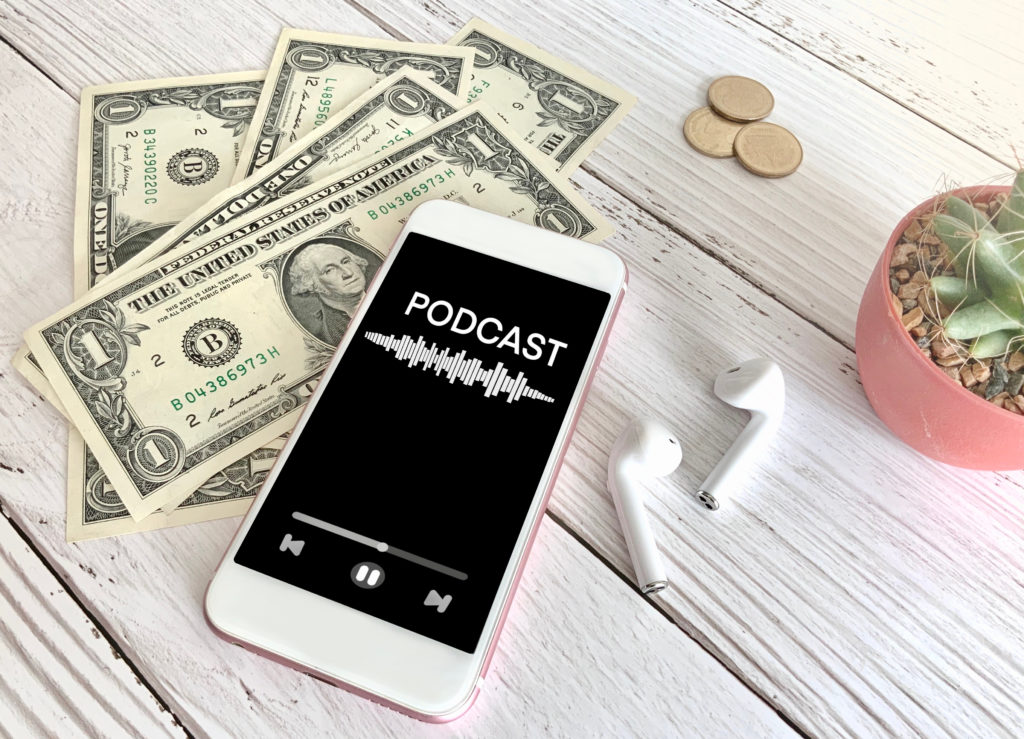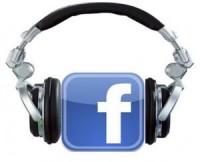
Last week, a pair of announcements from two Silicon Valley giants rocked the podcasting world. Facebook and Apple both announced new features that are likely to not only affect podcasters, but the entire audio industry. Here’s what radio broadcasters need to know:
Facebook is Embracing Audio
 Audio is hot right now. Naturally, Facebook has chosen to dive in — primarily by copying things that other companies were already doing. (There’s an important discussion to be had about the social value of allowing large companies to co-opt disruptive innovations made by entrepreneurial outfits, but I’ll leave that conversation to philosophers, economists, and members of Congress.)
Audio is hot right now. Naturally, Facebook has chosen to dive in — primarily by copying things that other companies were already doing. (There’s an important discussion to be had about the social value of allowing large companies to co-opt disruptive innovations made by entrepreneurial outfits, but I’ll leave that conversation to philosophers, economists, and members of Congress.)
Last Monday, Mark Zuckergberg announced a suite of new audio products. These include:
- An inline audio player in partnership with Spotify that will enable people to launch podcast episodes (and songs) from their Facebook feeds. The key to this player, which Spotify debuted in a blogpost this morning, could turn out to be the fact that it is done in conjunction with Spotify. When you press play on the miniplayer inside Facebook, you are prompted for permission to connect to the Spotify app. The podcast (or song) is then played in the background in Spotify, allowing the you to continue scrolling through your social media feed.
Audio is almost always consumed while people are doing other things — driving, working out, household chores, etc. — a fact that many past attempts to share audio on social media have ignored. By utilizing the Spotify app, Facebook is not forcing the user to focus their attention solely on the audio; it continues to allow them to multi-task. If this new feature succeeds, this could be the crucial reason why.
- A Clubhouse clone by making an audio-only version of their Zoom clone, Rooms. Clubhouse is the new platform that’s been abuzz since its introduction last year. Although it is still only available for iOS, it has been quickly embraced by a number of celebrities and other high-profile personalities, including iHeartMedia CEO Bob Pittman and President of Podcasts Conal Byrne, who moderated a discussion with Paris Hilton and others on the platform last month. Clubhouse’s rise has led to a lot of chatter about “social audio” being the Next Big Thing.
However, as Edison Research’s Tom Webster points out, “social audio” is a misnomer because once a group reaches a certain size, it can’t really be social in the same way that other platforms are. After all, while thousands of people may be able to reply to a social media post or YouTube video with a text comment, you simply can’t have thousands of people talk at once. At best, there’s a moderated discussion which allows individuals to briefly take the focus to speak a question or comment. “It’s talk radio,” says Webster. He’s absolutely correct — the only difference is that Clubhouse has made thousands of discussions on niche topics possible, while traditional talk radio isn’t able to scale the same way.
Indeed, Clubhouse had already seen a steep drop in downloads even before Facebook’s announcement, so it’s unclear what its future holds. (For another interesting perspective, see this Twitter thread (reproduced as a blogpost) from Shaan Puri.
- An audiogram generator (similar to Headliner) called Soundbites, which will enable users to turn short audio recordings into short videos that can be shared on the social network. This is crucial because audio content does not go viral, but video content does, so the ability to turn short pieces of audio into shareable video could help spread word about podcasts. But do audiograms actually work for podcasts? Caroline Crampton took a deep dive into this question for Hot Pod last fall. (Spoiler: *Shrug?*)
Apple and Spotify Are Enabling Podcasters to Generate Subscription Revenue
 At last week’s Spring Loaded event, Apple debuted Apple Podcast Subscriptions, a new program which, starting in May, will allow podcasters to monetize their shows by charging listeners for access. Apple will take a 30% cut of the revenue in the first year and then 15% afterwards. There is also a “freemium” pricing model.
At last week’s Spring Loaded event, Apple debuted Apple Podcast Subscriptions, a new program which, starting in May, will allow podcasters to monetize their shows by charging listeners for access. Apple will take a 30% cut of the revenue in the first year and then 15% afterwards. There is also a “freemium” pricing model.
The announcement came with a number of major companies already on board, including NPR, Luminary, and PRX. iHeartMedia was noticeably absent.
For a deep dive into everything included in Apple’s announcement, see this post from James Cridland of Podnews and, while you’re there, subscribe to his newsletter.
This is a big deal because Apple has always been the 800-pound gorilla in the podcasting arena — according to Libsyn, iOS is responsible for over 4 times as many podcast downloads as Android — but it hasn’t done all that much to embrace the podcasting universe. That’s not surprising; the entire podcasting industry is closing in on a billion dollars a year and Apple makes almost 60 times that in a single quarter. But Spotify has made major inroads in the podcasting arena in the last few years, and some believe that this has woken the sleeping giant.
After all, Spotify is also introducing initiatives to help podcasters monetize their shows. This week, according to The Wall Street Journal, Spotify will also allow podcasters to create subscription content. However, there’s a key difference: unlike Apple, Spotify will not take a cut of the subscription revenue. Of course, Spotify has infrastructure in place that allows it to monetize podcasts in a way that currently, Apple does not: through advertising.
Beyond revenue, the other key differentiator between Apple and Spotify when it comes to their subscription offerings could be data. Apple — which has always been hugely protective of its users’ data — has said that it will not give podcasters key information about the people who subscribe to their shows, including their email addresses. On the podcasting panel at last week’s All Access Audio Summit, broadcaster-turned-podcaster Jeff Dauler said the lack of data sharing means he’d be reluctant to offer subscriptions through Apple. So what will Spotify do?
What It Means for Radio
What does all this mean for radio? First and foremost, these subscription programs may open up a revenue channel that few if any broadcasters currently take advantage of. Imagine, for example, being able to charge listeners for access to past or bonus episodes of your morning show.
But beyond that, there may be a more significant long-term effect on the broadcasting industry: by making it easier for audio content creators to monetize their shows, the balance of power between management and on-air personalities could tip. Over the years, there have been a handful of terrestrial radio personalities who have found success by continuing to do a show after leaving traditional radio — Howard Stern, Adam Carrolla, Marc Maron, and Tom Leykis come to mind — but it’s often been an arduous road that required a lot of trailblazing.
In the past, when a high-profile on-air talent sat down at the negotiating table with management, the only alternative option to a deal was to move to another terrestrial station. If the talent only had a fanbase in one market, there were a very limited number of other places to go. Moving forward, however, it’s possible that “I’ll go it on my own” could be a realistic option for air talent with an established fanbase. Only time will tell.
Update: Spotify has now announced the details of its subscription program. You can find them on the Anchor blog.
- A Simple Digital Treat to Thank Your Radio Listeners This Thanksgiving - November 13, 2023
- Interview Questions When Hiring Your Radio Station’s Next Digital Marketing Manager - November 6, 2023
- A Radio Conversation with ChatGPT: Part 2 – Promotions - October 30, 2023





Good stuff. Now all I need are the subscribers and of course a winning product. We got that. Thanks for the info
Thanks for reading, Tony!
Way to break it all down Seth…very helpful! Thank you!
Thanks for reading, James. I couldn’t stay on top of all of this without the help of all the folks I linked to, including James Cridland, Rob Walch, Tom Webster, etc. If you aren’t subscribed to their stuff, I highly recommend it.
This will sort out the valuable content from the everyday drivel. The also-rans that try to charge will fail (or continue with ad based models), while only the top tier of creative, and valuable content will earn significant subscription revenue (see New York Times digital subscriptions). So while I agree this will be the beginning of the test, I also believe that the 80/20 rule will apply…except that it’ll be 95/5. Five percent of podcasters will be take 95% of the subscription money. My 2 cents, your mileage may vary.
No doubt it won’t work for everyone. I’m curious to see where the 80/20 dividing line — or 95/5 as the case may be — falls beyond just “more talented/less talented.” For example, can local or regional shows generate enough subscription revenue to sustain themselves? How big does a community need to be to make a subscription model feasible?
Related question: How affluent does a community need to be to make a subscription model work? I could get a thousand people to subscribe to my Rowboat Podcast for $5 a month, or I could get five people to subscribe to my Yacht Podcast for $1,000 per month.
Talent is going to be important for sure, but there could also be other factors at play. When you don’t need a transmitter or other expensive broadcasting equipment, there may be some new ways to make the numbers work.
True. The “fewer paying more” is sort of the old Kiplinger Letter model. If the content is exclusive enough, or valuable enough that can work.
Yes. Given the fixed costs involved in running a radio station, and the fixed geographic limitations of transmitters, the “sweet spot” for revenue models for radio is relatively narrow.
With drastically lower fixed costs and practically no geographic limitations on the audience, the number of potential workable financial models is likely to be much much bigger for podcasts.